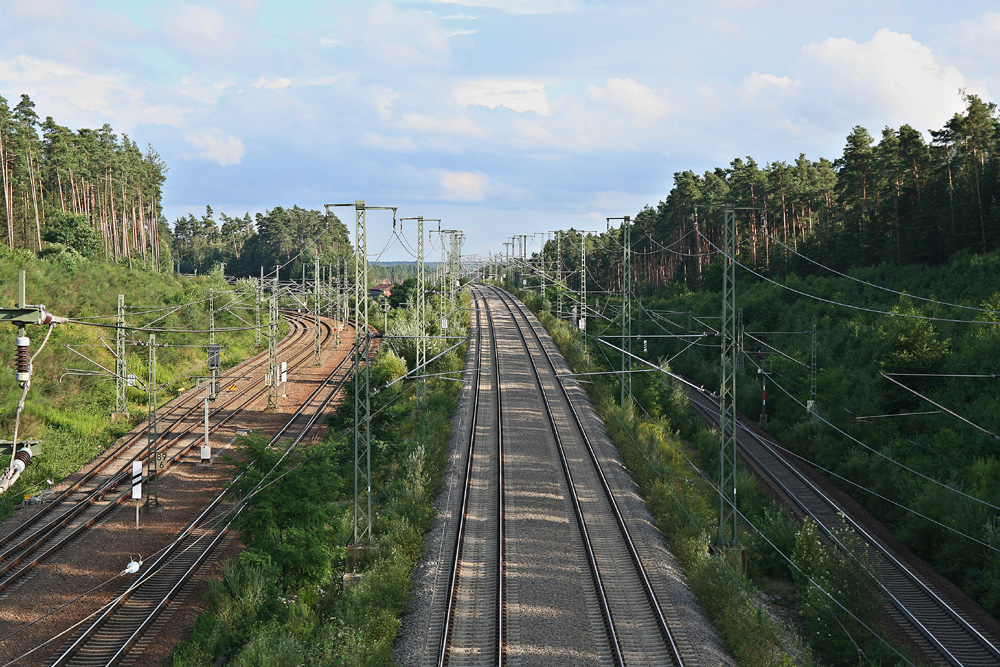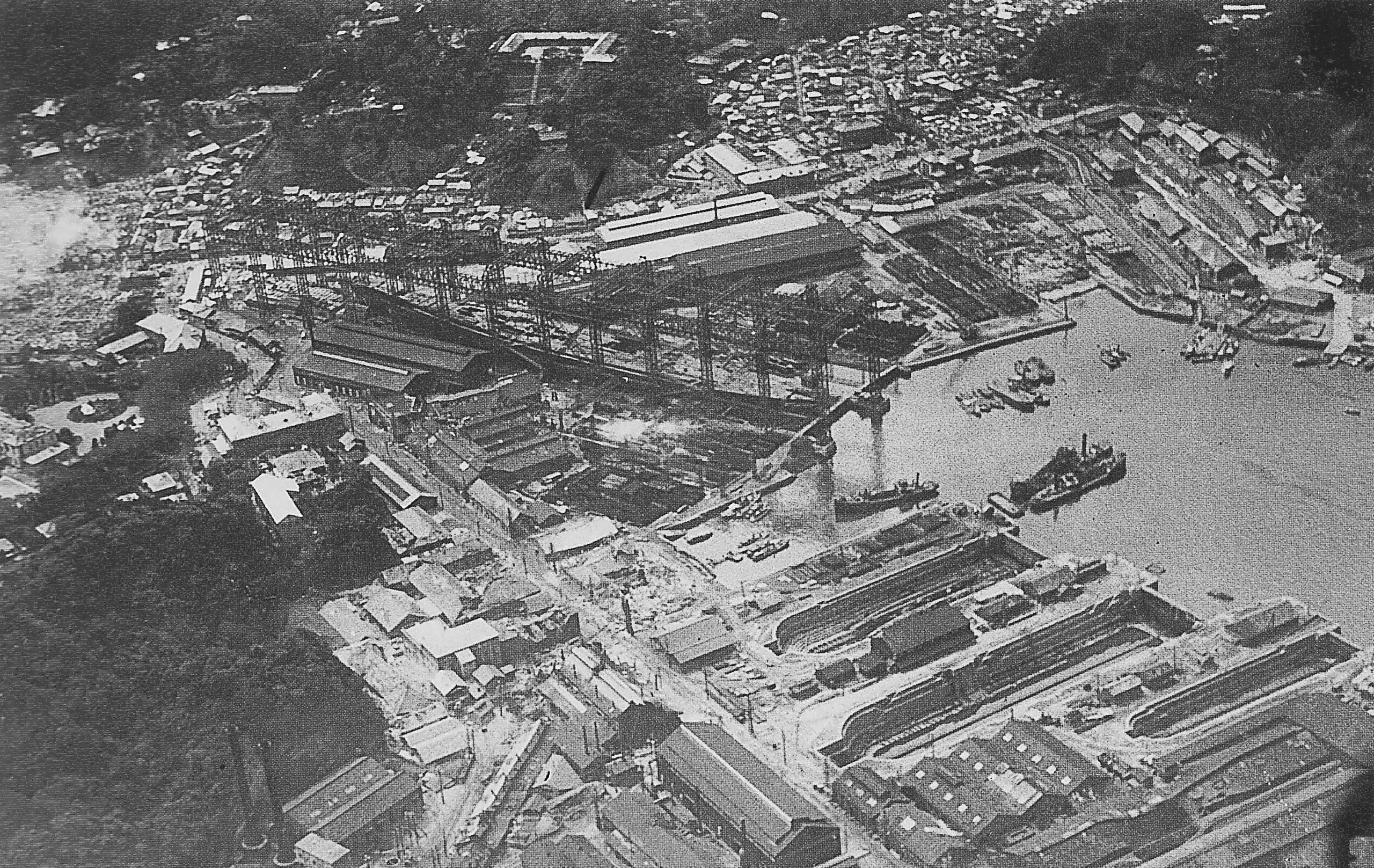|
Yokosuka Station
is a passenger railway station in located in the city of Yokosuka, Kanagawa, Japan, operated by East Japan Railway Company (JR East). Lines Yokosuka Station is served by the Yokosuka Line. It is located 15.9 km from Ōfuna Station, and 65.3 km from the Tokyo Station. Station layout The station consists of a bay platform and a side platform serving three tracks. Platform 1, formerly used for freight operations, is currently not in use. Platform 2 is used for trains which originate or terminate at Yokosuka, and Platform 3 is for bi-directional traffic. The station has a ''Midori no Madoguchi'' staffed ticket office. Platforms History Yokosuka Station opened on June 16, 1889 as the initial terminal station on the Japanese Government Railways (JGR) spur line from Ōfuna to serve the Yokosuka Naval Arsenal and related Imperial Japanese Navy facilities at Yokosuka. This spur line was renamed the Yokosuka Line on October 12, 1909. The present station building, the third ... [...More Info...] [...Related Items...] OR: [Wikipedia] [Google] [Baidu] |
JR Logo (east)
JR, J. R. or Jr. may refer to: Arts and entertainment * ''J R'', a 1975 novel by William Gaddis * J. R. Ewing, a ''Dallas'' television character * JR Chandler, an ''All My Children'' television character * ''Jornal da Record'', a Brazilian news program * ''JR'', a 2001 punk album by Jim Bob * "Jr.", a 1992 song by Codeine on the album ''Barely Real'' People In arts and entertainment * JR (artist) (born 1983), French photographer and street artist * J.R. (musician) (born 1979), American Christian singer and producer * JR (rapper) (born 1987), South African rapper and entrepreneur * Jayam Ravi (born 1980), Indian actor * Jinyoung (entertainer, born 1994) (formerly ''Jr.''), South Korean singer of Got7 and JJ Project * Kim Jong-hyeon (born 1995; stage name: ''JR''), South Korean singer of NU'EST * J. R. Martinez (born 1983), American actor and soldier * Jim Ross (born 1952), American wrestling commentator * John Ruskin (1819–1900), English writer and art critic In sport * J. R. B ... [...More Info...] [...Related Items...] OR: [Wikipedia] [Google] [Baidu] |
Spur Line
A branch line is a secondary railway line which branches off a more important through route, usually a main line. A very short branch line may be called a spur line. Branch lines may serve one or more industries, or a city or town not located on a main line. Branch lines may also connect two or more main lines. Industrial spur An industrial spur is a type of secondary track used by railroads to allow customers at a location to load and unload railcars without interfering with other railroad operations. Industrial spurs can vary greatly in length and railcar capacity depending on the requirements of the customer the spur is serving. In heavily industrialized areas, it is not uncommon for one industrial spur to have multiple sidings to several different customers. Typically, spurs are serviced by local trains responsible for collecting small numbers of railcars and delivering them to a larger yard, where these railcars are sorted and dispatched in larger trains with other ... [...More Info...] [...Related Items...] OR: [Wikipedia] [Google] [Baidu] |
Yokosuka Arts Theatre
is part of the mixed-use Bay Square complex in Yokosuka, Kanagawa Prefecture, Japan. It opened in 1994. The horseshoe-shaped theatre seats 1,806 and there is a smaller hall, the Yokosuka Bayside Pocket, with a capacity of 600. The Bay Square complex is by Kenzo Tange, with acoustical design of the halls by Nagata Acoustics is an international acoustical consultancy firm. In Japan they have been involved in the design of over seventy concert halls, including the Suntory Hall, Sapporo Concert Hall, Muza Kawasaki Symphony Hall, Kyoto Concert Hall and Hyogo Perfo .... References External links *Homepage*Performances {{authority control Concert halls in Japan Opera houses in Japan Buildings and structures in Yokosuka, Kanagawa Music venues completed in 1994 1994 establishments in Japan Kenzo Tange buildings ... [...More Info...] [...Related Items...] OR: [Wikipedia] [Google] [Baidu] |
United States Fleet Activities Yokosuka
or is a United States Navy base in Yokosuka, Japan. Its mission is to maintain and operate base facilities for the logistic, recreational, administrative support and service of the U.S. Naval Forces Japan, Seventh Fleet and other operating forces assigned in the Western Pacific. CFAY is the largest strategically important U.S. naval installation in the western Pacific. Fleet Activities Yokosuka comprises 2.3 km2 (568 acres) and is located at the entrance of Tokyo Bay, 65 km (40 mi) south of Tokyo and approximately 30 km (20 mi) south of Yokohama on the Miura Peninsula in the Kantō region of the Pacific Coast in Central Honshu, Japan. The 55 tenant commands which make up this installation support U.S. Navy Pacific operating forces, including principal afloat elements of the United States Seventh Fleet, including the only permanently forward-deployed aircraft carrier, , the group she heads, Carrier Strike Group Five, and Destroyer Squadron 15. Hi ... [...More Info...] [...Related Items...] OR: [Wikipedia] [Google] [Baidu] |
Japanese National Railways
The , abbreviated JNR or , was the business entity that operated Japan's national railway network from 1949 to 1987. Network Railways As of June 1, 1949, the date of establishment of JNR, it operated of narrow gauge () railways in all 46 prefectures of Japan. This figure expanded to in 1981 (excluding Shinkansen), but later reduced to as of March 31, 1987, the last day of JNR. JNR operated both passenger and freight services. Shinkansen Shinkansen, the world's first high-speed railway was debuted by JNR in 1964. By the end of JNR in 1987, four lines had been constructed: ; Tōkaidō Shinkansen: , completed in 1964 ; Sanyō Shinkansen: , completed in 1975 ; Tōhoku Shinkansen: , as of 1987 ; Jōetsu Shinkansen: , completed in 1982 Buses JNR operated bus lines as feeders, supplements or substitutions of railways. The JR Bus companies are the successors of the bus operation of JNR. Ships JNR operated ferries to connect railway networks separated by sea or to meet other ... [...More Info...] [...Related Items...] OR: [Wikipedia] [Google] [Baidu] |
Privatization
Privatization (rendered privatisation in British English) can mean several different things, most commonly referring to moving something from the public sector into the private sector. It is also sometimes used as a synonym for deregulation when a heavily regulated private company or industry becomes less regulated. Government functions and services may also be privatised (which may also be known as "franchising" or "out-sourcing"); in this case, private entities are tasked with the implementation of government programs or performance of government services that had previously been the purview of state-run agencies. Some examples include revenue collection, law enforcement, water supply, and prison management. Another definition is that privatization is the sale of a state-owned enterprise or municipally owned corporation to private investors; in this case shares may be traded in the public market for the first time, or for the first time since an enterprise's previous natio ... [...More Info...] [...Related Items...] OR: [Wikipedia] [Google] [Baidu] |
Kurihama Station
is a passenger railway station in located in the city of Yokosuka, Kanagawa, Japan, operated by East Japan Railway Company (JR East). Lines Kurihama Station is served by the Yokosuka Line. It is the southern terminus of the line and is located 23.9 km from Ōfuna Station, and 73.2 km from the Tokyo Station. It is also located 3 minutes' walk from Keikyū Kurihama Station on the Keikyū Kurihama Line. Station layout Kurihama Station has a single island platform connected to the station building by a footbridge. The station has a ''Midori no Madoguchi'' staffed ticket office. Platforms History Kurihama Station opened on 1 April 1944 as a station on the Japanese Government Railways (JGR), the pre-war predecessor to the Japanese National Railways (JNR).Kurihama Station information Retrieved on 28 Aug ... [...More Info...] [...Related Items...] OR: [Wikipedia] [Google] [Baidu] |
Imperial Japanese Navy
The Imperial Japanese Navy (IJN; Kyūjitai: Shinjitai: ' 'Navy of the Greater Japanese Empire', or ''Nippon Kaigun'', 'Japanese Navy') was the navy of the Empire of Japan from 1868 to 1945, Potsdam Declaration, when it was dissolved following surrender of Japan, Japan's surrender in World War II. The Japan Maritime Self-Defense Force (JMSDF) was formed between 1952 and 1954 after the dissolution of the IJN. The IJN was the third largest navy in the world by 1920, behind the Royal Navy and the United States Navy (USN). It was supported by the Imperial Japanese Navy Air Service for reconnaissance and airstrike operations from the fleet. It was the primary opponent of the Allies of World War II, Western Allies in the Pacific War. The IJN additionally fielded Imperial Japanese Navy land forces, limited land-based forces, including Special Naval Landing Forces, professional marines, Japanese marine paratroopers of World War II, marine paratrooper units, anti-aircraft defense units ... [...More Info...] [...Related Items...] OR: [Wikipedia] [Google] [Baidu] |
Yokosuka Naval Arsenal
was one of four principal naval shipyards owned and operated by the Imperial Japanese Navy, and was located at Yokosuka, Kanagawa, Yokosuka, Kanagawa Prefecture on Tokyo Bay, south of Yokohama. History In 1866, the Tokugawa shogunate government established the ''Yokosuka Seisakusho'', a military arsenal and naval base, with the help of o-yatoi gaikokujin, foreign engineers, including the France, French naval architect Léonce Verny. The new facility was intended to produce modern, western-style warships and equipment for the Tokugawa navy. The construction of the arsenal was an important first step for the modernization of Japan's industry. Modern buildings, an aqueduct (water supply), aqueduct, foundry, brick factories, and technical schools to train Japanese technicians were established. After the Boshin War and the Meiji Restoration, the new Meiji government took over control of the facility in 1871, renaming it the ''Yokosuka Zosenjo'' (Yokosuka Shipyards). The first dry ... [...More Info...] [...Related Items...] OR: [Wikipedia] [Google] [Baidu] |
Japanese Government Railways
The Japanese Government Railways (JGR) was the national rail transport, railway system directly operated by the until 1949. It was a predecessor of Japanese National Railways and the later Japan Railways Group. Name The English name "Japanese Government Railways" was what the Ministry of Railways (established in 1920) used to call its own and sometimes the ministry itself as a railway operator. Other English names for the government railways include Imperial Japanese Government Railways and Imperial Government Railways, which were mainly used prior to the establishment of the ministry. This article covers the railways operated by the central government of Japan from 1872 to 1949 notwithstanding the official English name of the system of each era. Network By the end of World War II in 1945, the Japanese Government Railways operated on the main Japanese islands of Honshū, Hokkaidō, Kyūshū, Shikoku and Karafuto Prefecture, Karafuto. The railways in Taiwan and Korea were op ... [...More Info...] [...Related Items...] OR: [Wikipedia] [Google] [Baidu] |
JR East
The is a major passenger railway company in Japan and the largest of the seven Japan Railways Group companies. The company name is officially abbreviated as JR-EAST or JR East in English, and as in Japanese. The company's headquarters are in Yoyogi, Shibuya, Tokyo, next to Shinjuku Station. It is listed in the Tokyo Stock Exchange (it formerly had secondary listings in the Nagoya Stock Exchange, Nagoya and Osaka Exchange, Osaka stock exchanges), is a constituent of the TOPIX Large70 index, and is one of three Japan Railways Group constituents of the Nikkei 225 index, the others being Central Japan Railway Company, JR Central and West Japan Railway Company, JR West. History JR East was incorporated on 1 April 1987 after being spun off from the government-run Japanese National Railways (JNR). The spin-off was nominally "privatization", as the company was actually a wholly owned subsidiary of the government-owned Japanese National Railway Settlement Corporation, JNR Settlement C ... [...More Info...] [...Related Items...] OR: [Wikipedia] [Google] [Baidu] |



